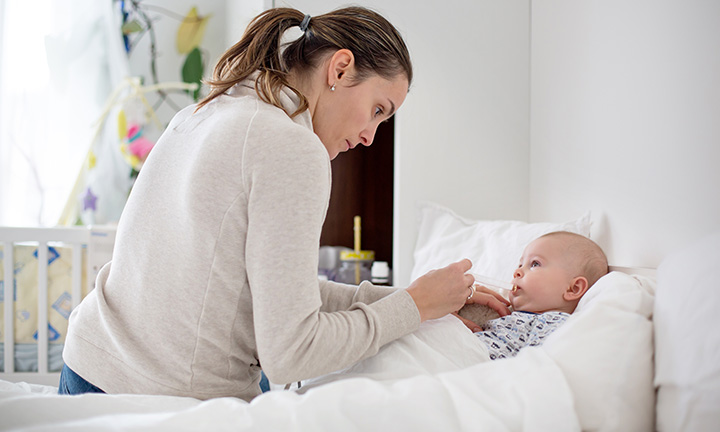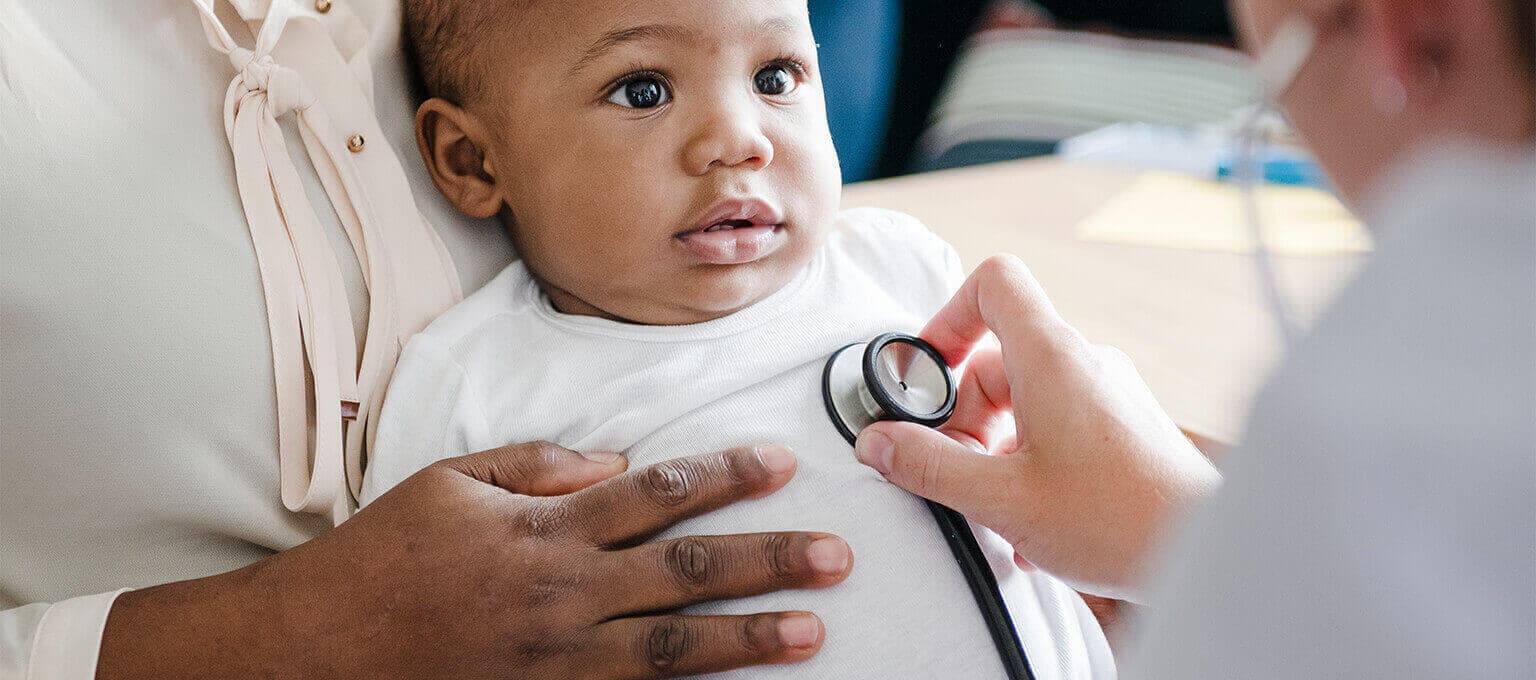
FAQ: Croup in Infants and Older Babies


Sometimes a cough is just a cough, but other times it can be a sign of a more significant condition that may require medical treatment. Croup is an inflammation of the upper airways that can cause your young child to cough with a barking sound. Find out more about what croup is, what its symptoms are, and how it can be treated.
What Is Croup and What Causes It?
Croup is an inflammation of the larynx (voice box), trachea (windpipe), and bronchi (bronchial tubes) that is quite common in children as young as 3 months and as old as 5 years. The inflammation causes these passageways to narrow, which can make breathing more difficult. Although croup most commonly affects children between 3 months and 5 years old, parents often ask, can newborns get croup? Yes, it is possible for newborns and infants under 6 months to develop croup, though it's less common. This leads some parents to wonder, why is croup rare in babies under 6 months? One reason is that very young infants may have maternal antibodies that offer some protection, but they're still susceptible to the virus causing croup. Therefore, while it's less common, can a newborn get croup? The answer is yes, so it's important to recognize the signs regardless of your child's age.
Croup is most often caused by the parainfluenza virus, which is more likely to spread during the fall and winter. Your child can catch the virus by coming into contact with another infected child. Just like other respiratory viruses, it’s passed through contact with droplets, so when your child touches their nose or mouth, there's a chance they may get the virus.
Although this infection can be uncomfortable for your little one, croup typically lasts from three to five days and can often clear up without treatment from your baby’s healthcare provider. If it does linger any longer or if your child has a more severe bout, take them to the provider for diagnosis and treatment.
What Are the Symptoms of Croup and How Long Do They Last?
You might think your child has a common cold at first because the early symptoms of croup can include a stuffy nose. In infants, such as a 2-month-old with croup, symptoms may progress rapidly, so close monitoring is important.
Eventually, the following symptoms can develop and are often worse in the evening:
How Can You Treat Croup at Home?
Since croup is caused by a virus, there's no specific at-home treatment for it. It can’t be treated with antibiotics, which are used to treat bacterial infections but aren't effective for viral infections.
Experts also recommend avoiding over-the-counter medicines like cough syrup, as these won't work and may be unsafe.
When your child has croup, focus on keeping them comfortable and calm. Agitation and crying can make symptoms worse, as they may cause the airway to tighten even more. Here are some things you can try:
In the past, parents might have followed the advice to bring their child into a steamy bathroom or to take them outside for moist night air. Though some parents find this helpful, there's no actual evidence that this is effective in treating croup.
If your child (who is older than 6 months) has a fever of 100. 4 degrees Fahrenheit or higher, you can try to bring it down with acetaminophen or ibuprofen. But be sure to check with their healthcare provider first. Always check with the provider when your baby is 3 months old or younger and has a fever. During a fever, make sure your child is getting lots of fluids, so they don't become dehydrated.
When Should You See Your Healthcare Provider?
If your little one’s symptoms worsen or linger for longer than five days, it’s time to contact their healthcare provider.
To make a diagnosis, the provider may observe how your child breathes, listen to their chest, and examine their throat. In some cases, the provider may order an X-ray to rule out the possibility of another condition.
If croup is diagnosed, your child’s healthcare provider may prescribe one of the following medications:
In very severe cases, if your child is having breathing difficulties, the provider may recommend your little one be hospitalized until their breathing improves.
When Should You Take Your Child to the ER?
Croup can cause your child’s airway to swell and narrow, which can make breathing difficult. Difficulty breathing may also result in your child stopping eating and drinking. They may even become too tired to cough.
If you see the following, take your child to the emergency room right away:
For example, if you have a 3 year old struggling to breathe, it's crucial to seek immediate medical attention.
The Bottom Line
Croup may be an uncomfortable childhood illness, but in time it will go away. In the meantime, all you can do is comfort your little one while you wait for the infection to pass and see their healthcare provider if the condition worsens. In typical cases, a child will be back to their usual self in less than a week.
Be sure to check out the free Pampers Rewards App to earn rewards and get access to exclusive content. Simply scan your Pampers diaper codes into the app, rack up Pampers Cash, and redeem them for discounts on the Pampers products you already buy.
- American Academy of Pediatrics. Caring for Your Baby and Young Child: Birth to Age 5, 7th ed. (New York: Bantam Books, 2019).
- Healthy Children. “Croup and Your Young Child.”
- Healthy Children. Caring for Kids with Colds & Flu: Simple Remedies to Ease Symptoms
- Mayo Clinic. “Croup.”
- Kids Health. “Croup.”









